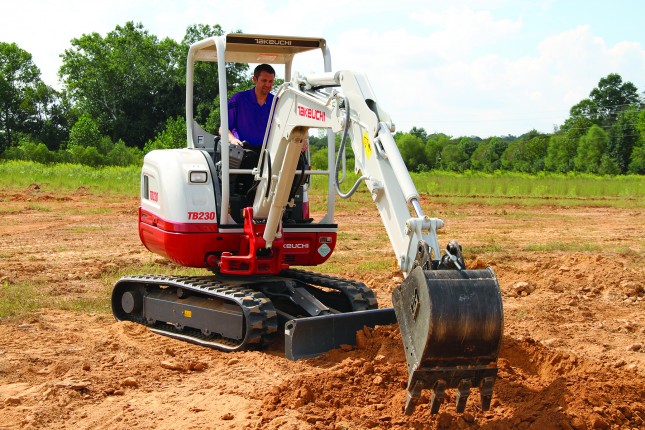
Tier 4 technology certainly has been a game changer, for users, renters, owners, dealers and even manufacturers. The more you know and understand about Tier 4, the better results you will have on the jobsite. For excavators, there are a few tips on what to look for when either renting or buying.
Many machines are right at the 3.5-ton threshold, and some manufacturers continue to keep this size, but strap a smaller engine to it to stay under the EPA threshold of 25.4 horsepower. By doing this, it cuts costs for operators because it does not require the more expensive engine control systems, nor does it have any exhaust aftertreatment devices.
While the renter or operator may reduce costs that come with a Tier 4 engine, they are actually doing themselves a disservice by choosing the smaller engine. By using a 3.5-ton excavator with a smaller engine, it will under-power the excavator, directly resulting in reduced performance and productivity. Depending on your needs, the reduction in power will hurt you in the long run. This is why it is better to go with the bigger, Tier 4 Final engine. If you have big plans for your excavator, make sure to look for a strong engine to give you the power you need.
Different manufacturers have different engines with exhaust aftertreatment systems. They differ between a Diesel Oxidation Catalyst (DOC) and a DOC with the addition of a Diesel Particulate Filter (DPF). Excavators that feature DOC only controls emissions, while the DOC plus DPF helps to further clean the exhaust. The DPF requires further period maintenance including regeneration, but it is the most reliable system for long-term emission reduction.
DPF is a filter for the exhaust. As the filter becomes plugged, it is more restrictive and needs to be cleaned. Regeneration is a cleaning process that is used to burn off carbon particles in the exhaust filter. While regeneration typically occurs automatically during operation, in some instances the excavator may require parked regeneration for a short amount of time to complete a more meticulous cleaning to restore the effectiveness of the exhaust filter.
While DEF is common on larger trucks and equipment, it does not exist on compact equipment at less than 75 horsepower, nor will it be in the works anytime soon. However, there is potential this year that operators could begin to see DEF in larger excavators, as well as in other compact equipment that operate above 75 horsepower.
Engine emissions are continually evolving and can be a tricky thing to understand, so make sure if you have questions, talk to your local dealer or consult your excavator manual. Know your options when you are buying or renting an excavator to make sure that you are getting the best bang for your buck. The more you know, the better your bottom line will be.
